Ghost in the Shell: SAC_2045 Was a Disappointment
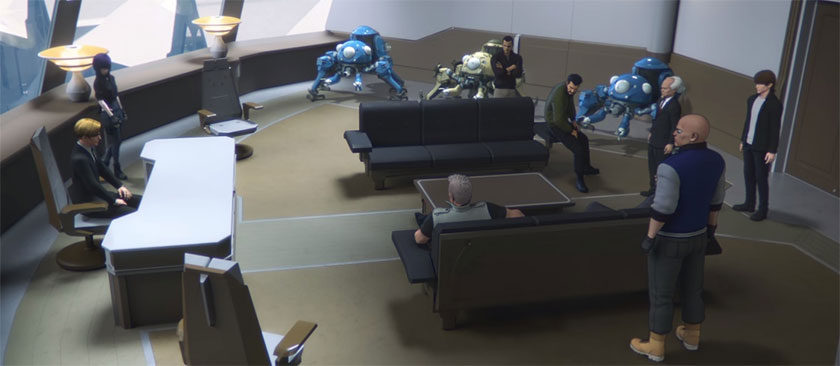
I don’t know where I stand in regards to the notion that Western corporations are starting to put their fingerprints all over the Japanese anime industry. It’s not like there’s a complete lack of evidence or sources, but aside from the hefty bags of money companies like Netflix and Crunchyroll use to persuade studios to make what they want, it’s uncertain whether they’re having a visible impact into how the shows are made. I already have a healthy distrust of Western translation of video games, anime, and manga due to the “I Made This” attitude of many of the industry’s translators, masquerading liberal reinterpretation and modification as “localization”. Of course, that is an incendiary topic all its own, and one filled with ignorant arguments and perspectives on “both sides” of the fence (which, like so many things these days, shouldn’t even be about “sides”).
Intricacies of localization and arguments of accuracy aside, Ghost in the Shell: SAC_2045 is just one of those shows that leaves me wondering whether it has such Western meddling involved due to such additions as one particularly pink-haired member: Purin Esaki. I’d say that she is the Jar Jar Binks of the show, only I feel as if my meaning would be too misunderstood. It’s more like she’s a character from the Star Wars sequel series dropped into the straight-laced world of Star Trek: The Next Generation, there to appeal to the young crowd and their TikToks and Instant Grahams. She’s also super special and magically talented with computers and hacking because of course she is. Everything about her screams “audience self-insert” in a way that feels out of place for Ghost in the Shell: SAC_2045.
Which is a shame, because in the latter half of the series, she could have been a far more suitable exploration of Ghost in the Shell’s best themes.
This essay will immediately go into some pretty big spoilers for the show, so be alert in case you plan to read onward.
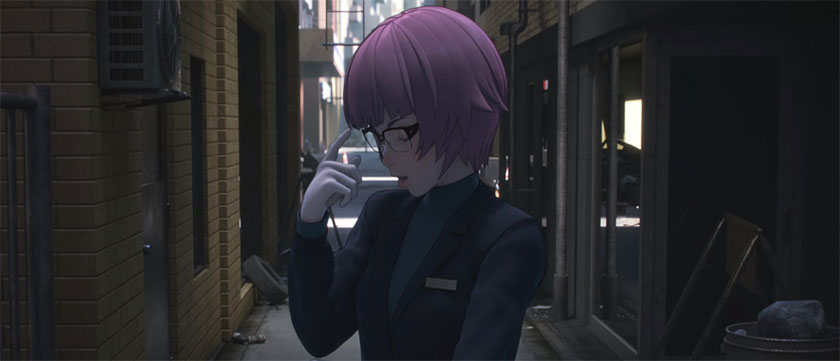
I should note that I accept the possibility of her being an audience self-insert. She could just as likely be there for modern Otaku sensibilities. Either way, she’s out of place.
Purin Esaki dies. Or at least, her body does. She is infected with some Post-Human program that feints the viewer into believing she had become a bad guy. However, she was, in fact, never evil. Of course she wasn’t! Our pink-haired wunderkind is the first and potentially only Post-Human capable of being infected without also becoming evil. Or what everyone assumes is evil. I’ll get to some of that later. All that you need to know is that she tried to stop the real bad guy from enacting their dastardly deed, but in doing so was gunned down by those she was trying to assist.
Oddly enough, this was the catalyst for Purin Esaki to become an actual character. In the episode following her death, the mascot-like Tachikomas investigate Purin’s history and uncover her motivations for joining Section 9. It was strange that they’d wait until after she had died to give her some real depth, and for a moment I was wondering if, should her presence have been a mandate from Western Netflix after all, this was the team’s way of sticking it to the demands of their foreign interlopers while still giving the character a proper send off.
It would certainly fit in line with the rest of the narrative, where the American government is an oppressive force trying to throw its weight around while making veiled threats and keeping secrets. Rarely have I ever seen the United States portrayed as such an antagonistic entity in Japanese media, and while I know enough of the nation’s post-WWII history to understand why the United States government would be portrayed as one big bully, I also could not help but wonder if it was an allegory for larger American corporations trying to dictate what Japan’s entertainment should be.
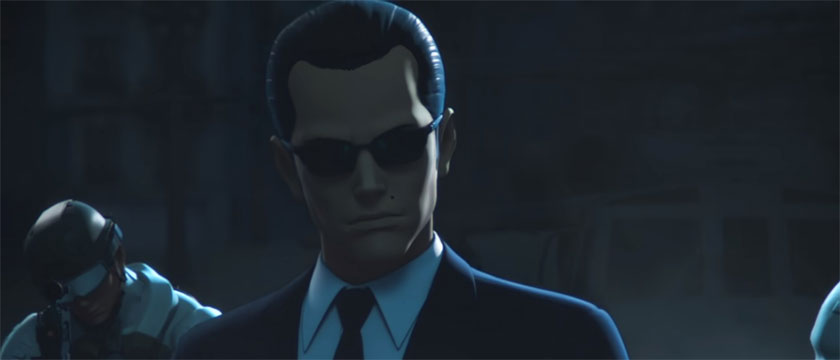
Mr. Anderson…
Unless the creative team speaks on the matter themselves, I will likely never know what is or isn’t the reasoning for a big bad American government. What I do know, however, is that those Tachikomas are able to gather Purin’s memories and all data regarding her, compiling it (and, of course, the AI responsible for this Post-Human mess to begin with) together into a fully synthetic android body.
For a moment I thought Ghost in the Shell: SAC_2045 was going to do some actual speculative science-fiction, asking questions of not only whether Purin was truly alive, but whether she counts as a continuation of the original Purin or is a new, individual entity all her own. After all, it was through such contemplative and pensive character examination that Mamoru Oshii explored in his seminal 1995 film that made Ghost in the Shell as a franchise so iconic. The perception of anime in Western culture changed not only due to the “mature” presentation of its animation, but due to the existential questions that plagued protagonist Mokoto Kusanagi. With her brain being the only organic portion of her body, how could she prove she was real? After all, you cannot see your own mind.
This intellectual and philosophical perspective was the driving force behind the Ghost in the Shell movie, and it would influence Stand Alone Complex writer and director Kenji Kamiyama’s direction with the televised series that would follow. Kenji also wrote and directed SAC_2045, but it feels like he abandoned Mamoru Oshii’s substance and instead continued with a superficial style pretending to be speculative and philosophical.
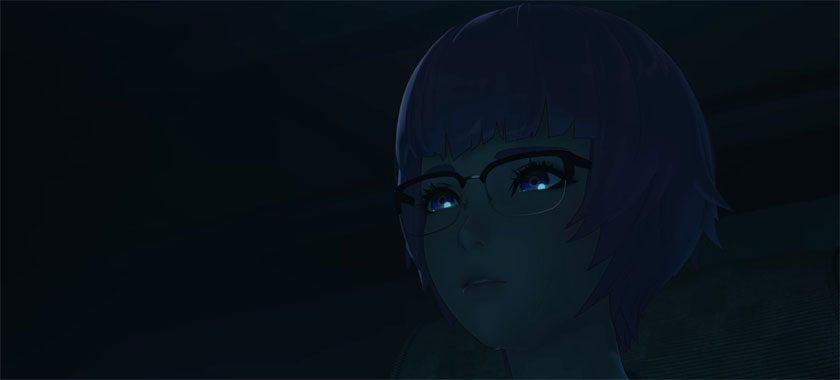
This single tear drop is the closest we get to reflection on the fact that Purin died, no longer inhabits her original body, and does not even have an organic mind.
I say this because the show never really addresses such obvious situations as Purin being reborn as an android. Yes, characters are startled to see her alive, but they act as if she’s the same person that had died filled with bullet holes. Her memories aren’t even wholly her own, but a collection of data she had stored on hard drives combined with other materials about her. Nothing physical of her former self exists. Her potential existential crisis is a step beyond that of Kusanagi’s from the original film. She is also separate from the Tachikomas, machines that became self-aware on their own. There’s a lot of room to explore here, and…
...she instead sheds a few tears before charging ahead towards a Matrix-style fight against one of the primary antagonists.
Which is the other red flag for the series as a whole. Central to the plot of SAC_2045 is the Post-Human, an evolutionary step taken through digital modification of the human mind to exceed one’s typical limits. Despite the show’s direction and presentation having that cold, pensive approach to make it seem intellectual, the actual execution is purely shounen simplicity. Hardly any explanation into how this is possible is provided, save maybe an over-reliance on implants and artificial limbs. It doesn’t matter how some advanced code is capable of empowering a woman in her thirties to leap great distances between rooftops regardless of the organic or artificial nature of her legs (and all other muscles and body parts necessary for the act of jumping). You are instead expected to accept this because it looks cool and characters are saying things that sound like something smart people would say.
Why?
What is it all for?
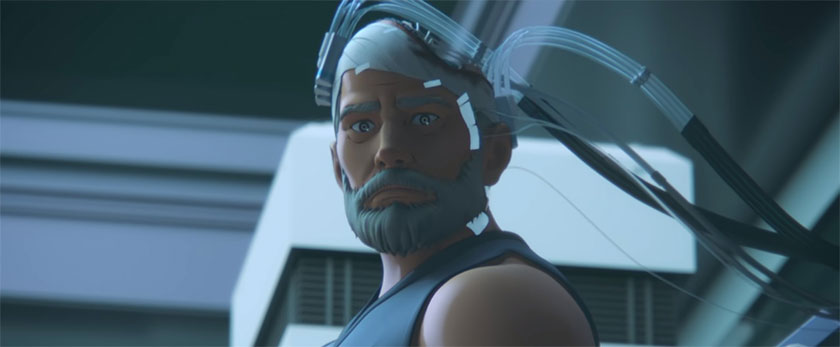
This Post-Human reveal was effectively directed and the ensuing set piece was entertaining, but it was all style with little substance.
The only aspect of the show worth giving any intellectual thought to is the heavy influence of George Orwell’s 1984 on the antagonist. His entire goal is to become Big Brother and secure peace across the world, regardless of who wants it or not. It’s not revealed until the final episode, but the entire purpose of his plan is to effectively force everyone on Earth to behave in a manner that will maintain peace and, supposedly, provide equality. In other words, rather than take inspiration from the revolutionary philosophy found within 1984, the young man decides Big Brother had the right idea. The notion of someone seeing the frightening vision of an oppressive regime masquerading as a protector as a good thing rather than bad, and that it is the impression of a young man who had lost something precious, is somewhat worth examining.
Only the show itself, again, offers no time to explore these concepts further. The first half of the show meanders on the Post-Humans who, ultimately, are just a plot device to get us to the show’s conclusion. While there are some interesting possibilities peppered throughout the latter half, such as Purin Esaki’s new life as an android or the antagonist’s inspiration from 1984, no time is spent exploring what such possibilities could mean.
If we’re grading on a scale, then Ghost in the Shell: SAC_2045 is still better than the majority of the anime out there. It has loftier goals and tries to actually be about something more than escapist, consumer-driven fantasy. I can’t help but commend it for that very reason. Additionally, as strange as its choice of art style is, looking more like a video game cut-scene than an actual animation, it’s not completely repulsive and ...well I can’t say it will grow on you, but it certainly is tolerable. So, yeah, it was pretty good.
Unfortunately, “pretty good” is also pretty damning when it comes to what Ghost in the Shell as a franchise can be. I don’t know what SAC_2045 is trying to be, but it’s certainly not speculative science fiction living up to the standards of even Kenji Kamiyama’s former work within the property. It fails to ask questions or to explore the possibility and consequence of a technologically over-saturated future. It instead uses these things as an aesthetic, screaming loudly and stylishly without forming any words of meaning.
What a disappointing waste of potential.


